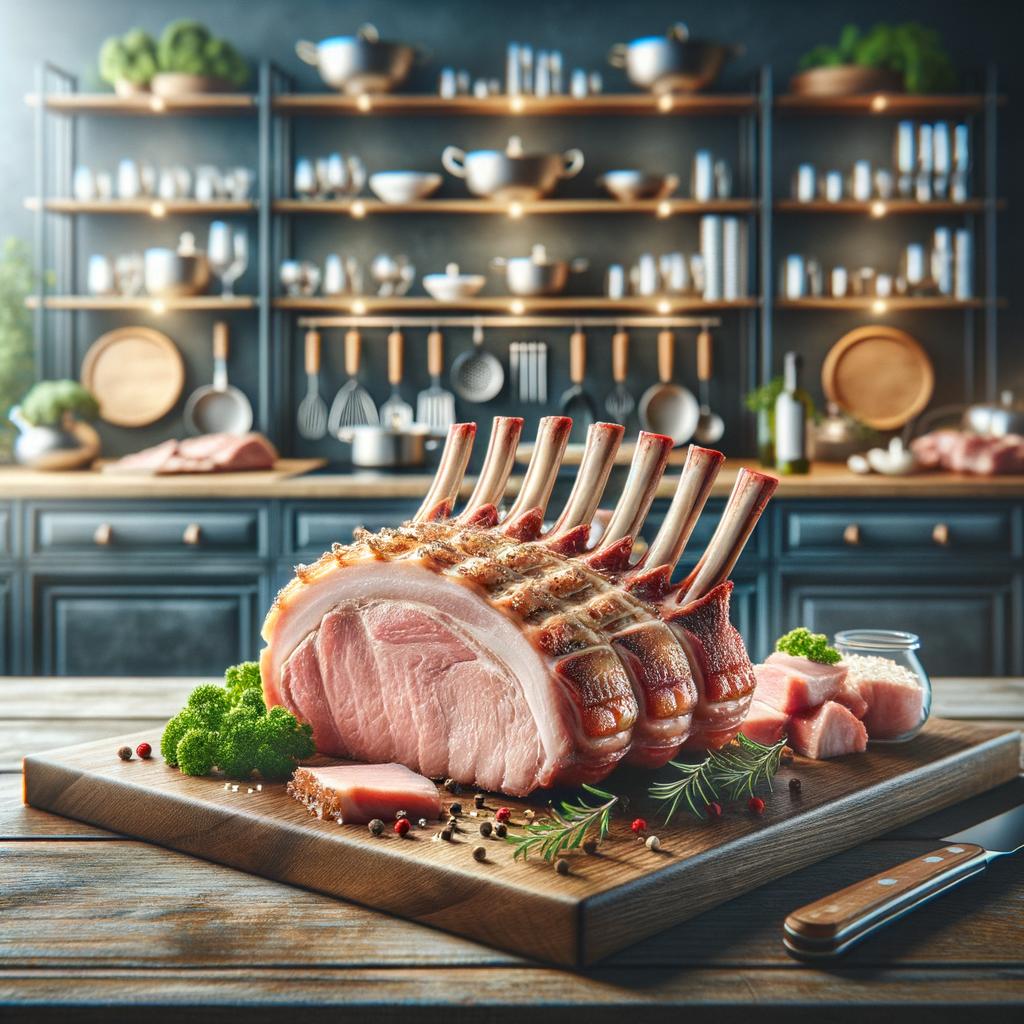Rack of Pork

Rack of Pork
Description
The rack of pork is a majestic cut of meat that comes from the rib section of a pig. It is an impressive sight to behold, with its row of ribs standing tall, crowned by a cap of succulent meat and a layer of fat that crisps up beautifully when cooked. The meat itself is tender and juicy, with a flavor that is both robust and delicate, a testament to its high-quality cut. The rack of pork is unique in its presentation, often served as a full rack and carved at the table, adding a touch of drama and elegance to any meal.
Primary Uses
Rack of pork is a versatile ingredient that can be prepared in a variety of ways. It is often roasted whole, with the ribs frenched for an elegant presentation. It can also be cut into individual chops and grilled or pan-seared. The rack of pork is a staple in many cuisines, from the hearty, herb-crusted versions found in English cooking to the sweet and tangy barbecue styles seen in American cuisine. Beyond its culinary uses, the rack of pork also holds cultural significance in many societies, often served during celebrations and festive occasions as a symbol of abundance and prosperity.
History
The history of the rack of pork is as rich and varied as the cultures that have embraced it. In medieval Europe, it was a favorite among royalty, often served at banquets and feasts. The tradition of roasting a whole rack of pork is thought to have originated in France, where it was known as a "carré de porc". Over time, its popularity spread across the globe, evolving with each culture's unique culinary traditions. There is an old English folklore that says a rack of pork served on New Year's Day brings good luck and prosperity for the year to come.
Nutritional Information
Rack of pork is a good source of high-quality protein and essential nutrients. It is rich in B-vitamins, particularly vitamin B12, which is important for brain function and the formation of red blood cells. It also contains zinc, iron, and selenium, minerals that play crucial roles in maintaining good health. The fat in the rack of pork, while adding flavor, should be consumed in moderation due to its saturated fat content. When compared to other cuts of pork, the rack is leaner than the shoulder or belly but fattier than the loin, providing a good balance of taste and nutrition. As always, the key to a healthy diet is balance and moderation. Enjoying a rack of pork as part of a varied diet can certainly be part of a healthy and delicious lifestyle.

